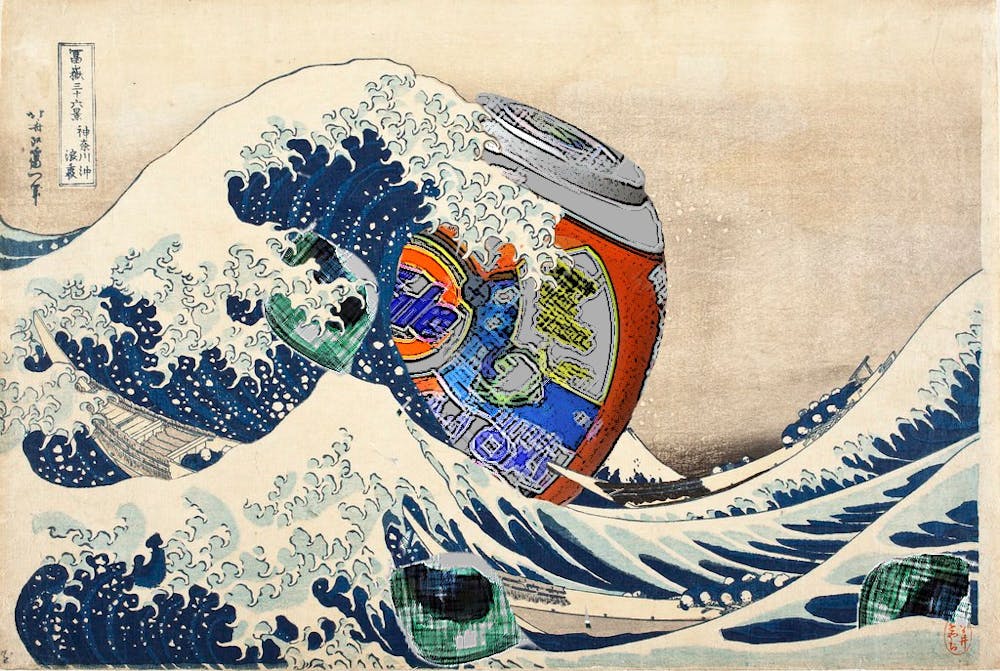ASU researchers released a study on plastic pollution from detergent pods which found the pods not as earth-conscious as some brands boast, raising environmental concerns and how eco-friendly is defined by corporations.
Laundry or dish detergent pods, digitally known as forbidden fruits, are encased in a water-soluble plastic called polyvinyl alcohol (PVA). Initiated by an inquiry and funding from cleaning solution brand, Blueland, two ASU researchers working with nonprofit Plastic Oceans International conducted a study on the environmental impacts of PVA from detergent pods.
Like magic, the plastic pod enters the wash and disappears leaving behind only clean clothes or dishes. Now you see it, now you don't.
Or, do you?
This is the question postdoctoral researcher Charles Rolsky and graduate student Varun Kelkar, think more studies should answer.
Commonly marketed as "biodegradable," these PVA pods do not have enough research to back their "eco-friendly" claims, according to ASU researchers. Their work aims to hold advertisers accountable and "start saying things accurately" Rolsky said.
Rolsky is the director of science for Plastic Oceans and Kelkar is a volunteer. When Blueland inquired with the nonprofit asking just how biodegradable PVA is, the company was directed to the researchers, said Julie Andersen, CEO of Plastic Oceans.
While published research specific to PVA is lacking, Rolsky and Kelkar investigated its effects on plastic pollution and wastewater by sifting through published works like "lawyers building a case," calling for more research to be done on PVA, Rolsky said.
In their quest to determine how much PVA is entering the environment from regular household use, Rolsky and Kelkar digitally sifted through heaps of peer-reviewed articles.
By synthesizing the data gathered, without ever testing PVA firsthand, the study ultimately found over 8,000 tons of PVA pass through wastewater treatment plants per year.
Their study included an online survey to approximate how many detergent pods are used in the U.S., data on water usage and wastewater in the U.S., a study on the biodegradability of detergent pods, a map of PVA emissions in the U.S. and an extensive literature review.
Unlike other plastics which bypass wastewater systems as small particles of plastic — microplastics— PVA is water-soluble. Like salt or sugar, PVA becomes a solution of water and dissolved plastic, Kelkar said.
PVA, therefore, does not completely biodegrade. Rather, it becomes a part of the water.
Rolsky and Kelkar's analysis connected known data of microplastic contamination from wastewater treatment plants to also being a probable cause of PVA pollution. However, there are few studies focusing on the effects of PVA in the environment.
This uncertainty of the fate of PVA once it is in wastewater is especially concerning because "smaller plastics have a higher risk" of entering ecosystems or even our bodies, said Rolsky.
One example of this concern is demonstrated by microplastics, which have the known ability to absorb contaminants and carry them up the food chain. Past studies on PVA demonstrate its similar ability to carry metals from sediment to waterways. This raises further questions regarding PVA's potential to carry contaminants and pharmaceuticals found in wastewater.
For a product to actually biodegrade, "you have to have the right microbes, the right conditions, the right temperature, the right pH (and) the right amount of time," Rolsky said. These conditions are not fully met in wastewater treatment plants or in the environment, inevitably leaving behind some PVA in the wastewater.
Still, many brands advertise their detergent pods as eco-friendly products despite the minimal research on PVA.
Andersen said while she believes eco-conscious companies could have good intentions, regulations need to be made regarding how marketing buzzwords like natural, sustainable or biodegradable are defined.
If a product can only be degraded within a very specific set of conditions formulated in a lab, then it should not be labeled biodegradable unless it can truly degrade in nature, she said.
Due to the current lack of scientific understanding regarding the breakdown of PVA, Rolsky and Kelkar suggest using liquid detergent and recycling the clean bottle later rather than the continued use of detergent pods.
While plastic remains a major pollutant, at least the detergent jug has the potential to become something of further value as recycled material, whereas the fate of PVA might as well be a mystery.
Current science proves microplastics have macro-consequences for aquatic and human life alike. Rolsky and Kelkar hope their findings lead to more research and regulations.
Together, they believe it is time to bring Tide Pods, and their subsequent candy-like cousins, back into public conversation. But this time, not just for their delectable appearance.
Reach the reporter at cbraggs@asu.edu and follow @ConteuseClaire on Twitter.
Like The State Press on Facebook and follow @statepress on Twitter.
Continue supporting student journalism and donate to The State Press today.




